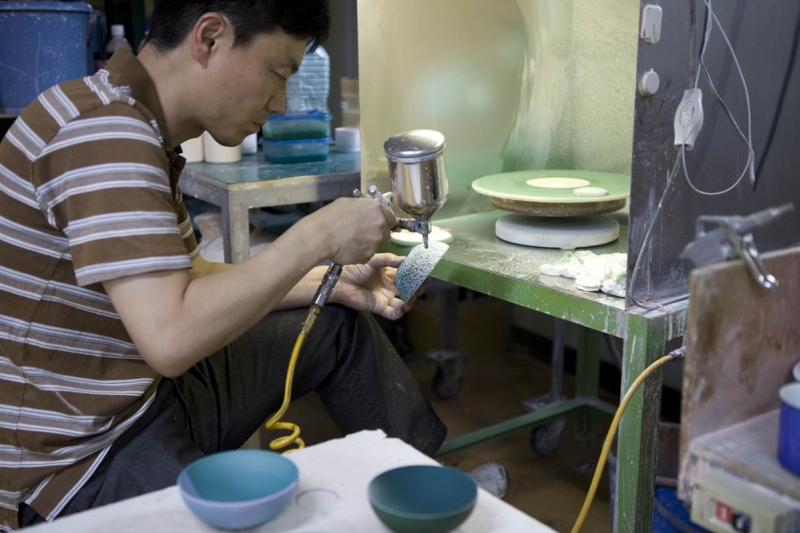Interview: David Glaettli
The 2016/ project is an ambitious undertaking involving many potteries, designers and individual porcelain products. Bridging them all is David Glaettli. Glaettli is an experienced Kyoto-based design director and -consultant who works for established brands such as Karimoku New Standard, for whom he is Creative Director since 2013 (March). At 2016/ his role of Design Director sees him bringing the designers ambitions and the maker’s abilities together and in doing so he is afforded an especially privileged perspective on the inner workings of the project.
- What does design direction entail at 2016/ project?
I have worked closely with the creative directors Teruhiro Yanagihara and Scholten & Baijings on the direction of the project and the direction of the designs. We selected the designers together. This was an exciting phase to be part of, it was important for us to choose a diverse group. We choose these designers from different countries as we always intended the designers to act as ambassadors for the project in their home countries.
Early on, we created the project brief to communicate the purpose of the brand and express its motivation and convey a sense of responsibility to the designers. The brief was tailored for each designer and set out the product categories, price levels and possible product applications. All of which was developed after meetings with the trading companies and potteries in Japan and the designers, distributors and retailors in Europe.
After the briefing came the design development with stages of discussion and revisions with the designers, then the matchmaking of designer and manufacturer during which we tried to match skills, techniques and personalities, and now we are in the product development phase.
- You have a large responsibility, it now falls to you to interpret the designer’s work and help the manufacturers produce it.
Yes, although I am very comfortable with that. I understand what the designers want to do. The biggest concern was what if the potteries didn't like the designs but thankfully that hasn’t happened. The potteries are so motivated and so excited about the project. Even though they don't know the contemporary design world very well and they are looking at products that are unfamiliar, mysterious, to them, they are very committed.
In any country you will find a cultural difference between a designer and a craftsman. In this project we have that distinction plus different continents and very different cultural backgrounds to contend with. I have to mediate between these two worlds and somehow explain to both sides what is needed.
- What qualities in the final products are you working towards?
They have to be products that communicate the quality of Aritaware, products that can only be made in Arita and not somewhere else. There is something special about Aritaware in that it sits between craft and mass-production; there is the common use of mass-production techniques but yet much beautiful handwork as well. Making use of the specialist hand skills whilst also creating pieces that can be made and sold in large numbers is important.
- You have the best insight into the range of techniques and processes
that the 16 designers will be using. What have they chosen to make use?
Happily, every designer picked out something different to concentrate on: They are making use of the possibility to have different thicknesses on the same porcelain object, the ability to fully glaze an object by firing upside down, some are using special clay developed in Arita that is extremely strong and heat resistant whilst others are developing new applications for porous technical ceramics normally used as water filters. Elsewhere traditional under-glazed colour is being applied in new ways and references to historic shapes and patterns are being made.
- Are you confident that this system of design and production can endure in Arita?
I see that the people in Arita are getting more and more comfortable with working with the designers. They have established a successful way of collaborating and if the 2016/ products sell then this will continue and more designers will come and more international brands will choose to produce here (HAY and Georg Jensen are two companies already producing collections of Scholten & Baijings in Arita). This is an important goal: simply making Arita more accessible to the world.












